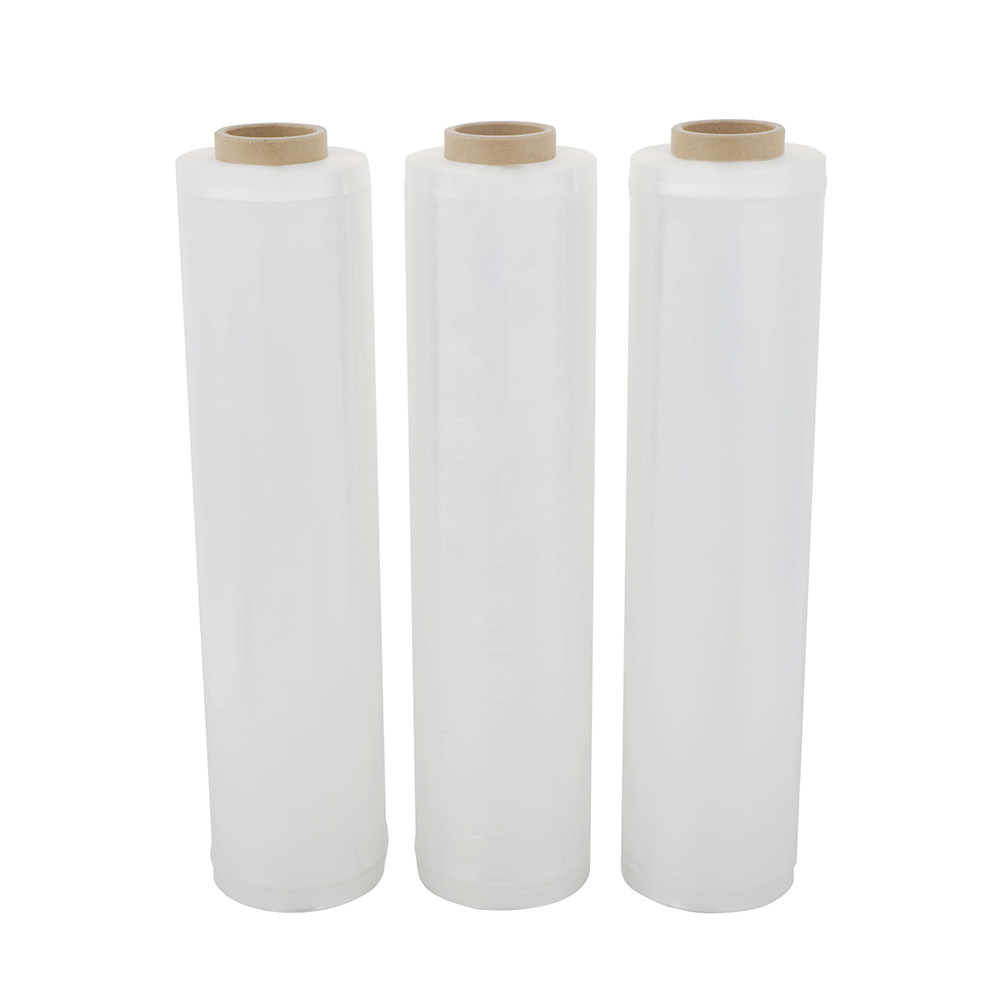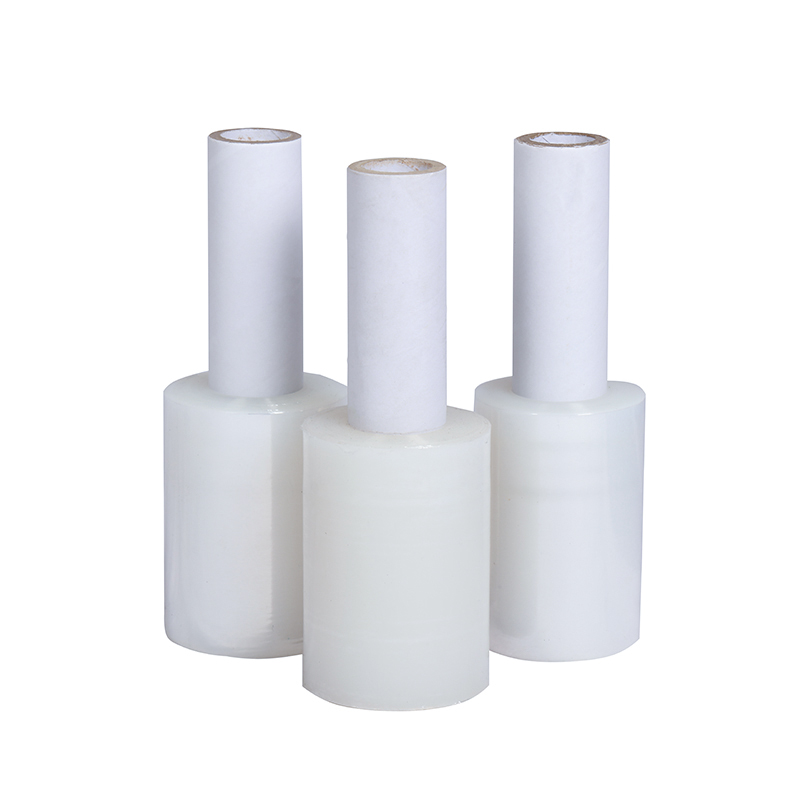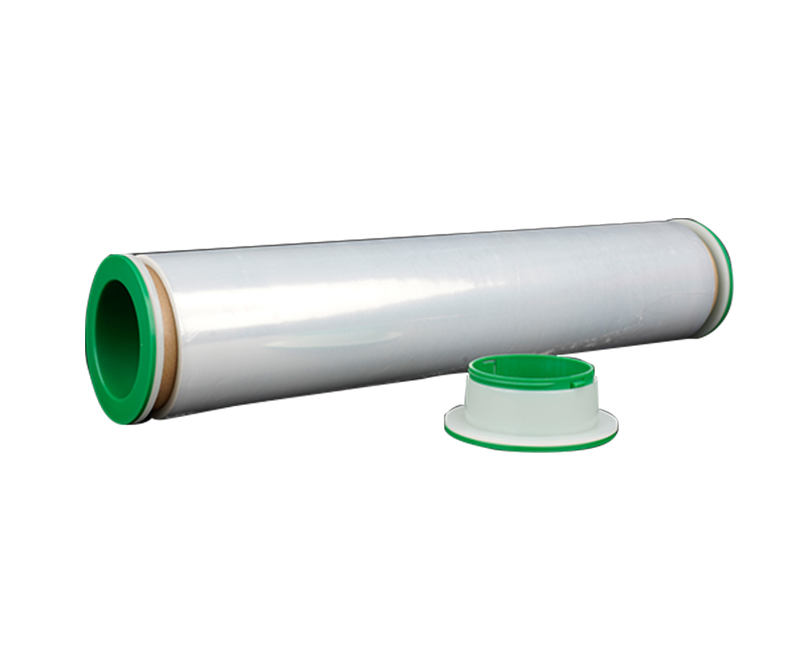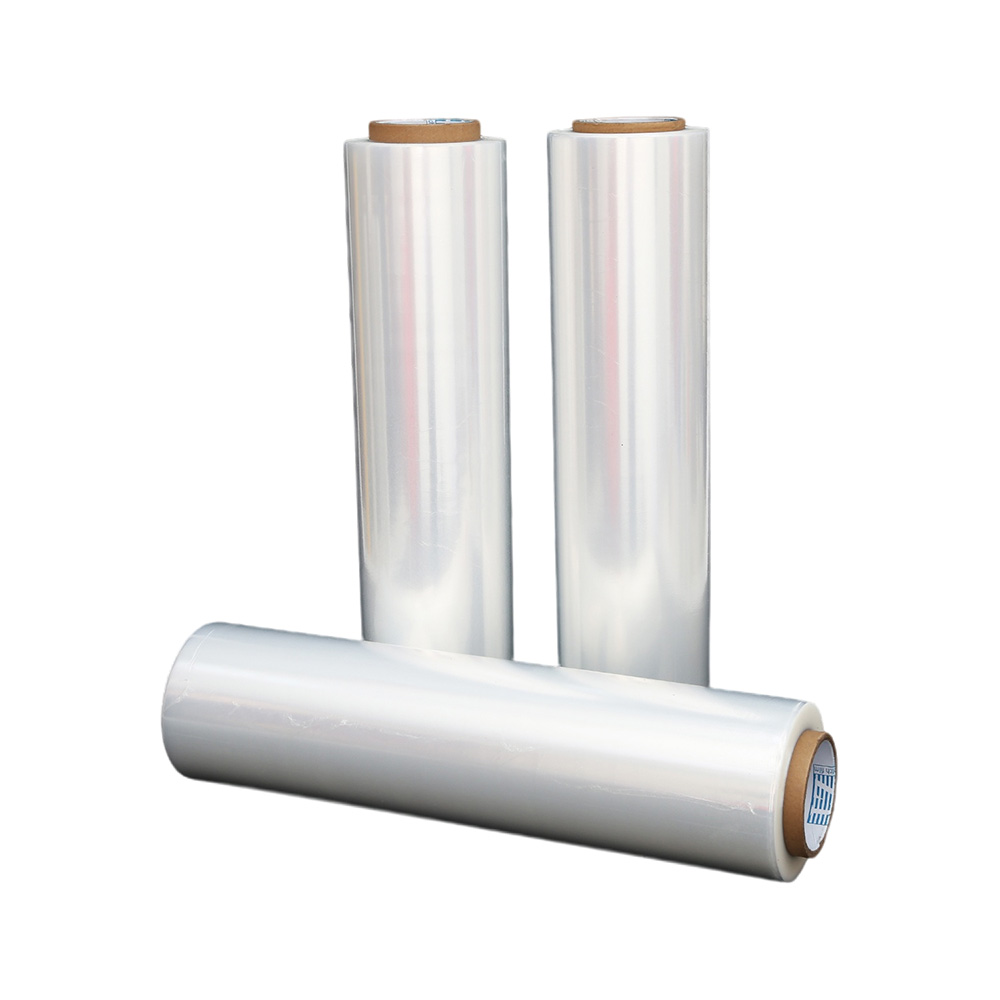Stretch Film vs. Cling Wrap: Know the Difference
Source:Stretch Film vs. Cling Wrap: Know the DifferenceTime:2025-07-07Visitors:
Often confused due to their transparent, stretchy nature, stretch film and cling wrap serve fundamentally different purposes in the world of packaging. Despite superficial similarities, these two materials are designed for distinct applications, differing significantly in their composition, properties, and ideal use cases. Understanding these differences is crucial for selecting the right material to protect goods, whether for industrial shipping or household food preservation. This article will delve into what sets stretch film and cling wrap apart, their specific advantages and disadvantages, and why they are generally not interchangeable.
Table of Contents
- What is Stretch Film, and What is Cling Wrap?
- What Are the Key Differences in Material and Properties?
- Where Is Stretch Film Typically Used Compared to Cling Wrap?
- What Are the Advantages and Disadvantages of Stretch Film?
- What Are the Advantages and Disadvantages of Cling Wrap?
- Can Stretch Film and Cling Wrap Be Used Interchangeably?
- How Do Their Costs and Sustainability Profiles Compare?
1. What is Stretch Film, and What is Cling Wrap?
Stretch film is a highly elastic plastic film used primarily for unitizing and securing palletized goods during shipping and storage, while cling wrap is a thin, self-adhesive plastic film typically used for food preservation and household sealing. Both are made from polyethylene-based polymers, but their manufacturing processes and resulting characteristics are tailored for their specific applications.

Stretch film is engineered to be wrapped tightly around items, using its elastic recovery to hold loads securely on a pallet. Cling wrap, conversely, relies on static cling or inherent tackiness to adhere to itself and various surfaces, creating a protective barrier, usually for food items.
2. What Are the Key Differences in Material and Properties?
The primary differences between stretch film and cling wrap lie in their thickness, stretchability, adhesion mechanism, and overall durability, which are direct results of their distinct polymer compositions and manufacturing processes. Stretch film is typically thicker and designed for high elongation and elastic recovery, relying on mechanical tension and cling to secure heavy loads. Cling wrap, being much thinner, utilizes static cling or specific adhesive properties to create an airtight seal.
Here's a detailed comparison:
3. Where Is Stretch Film Typically Used Compared to Cling Wrap?
Stretch film is predominantly utilized in industrial, warehousing, and logistics environments for unitizing and protecting large, palletized loads, while cling wrap is commonly found in household kitchens and food service settings for preserving individual food items or covering containers. Their applications are tailored to their unique material strengths and adhesion methods.
- Stretch Film Applications:
-
Warehousing & Shipping: Securing goods on pallets to prevent shifting, damage, and pilferage during transit.
-
Manufacturing: Unitizing products immediately after production for storage or distribution.
-
Construction: Protecting building materials from weather and dust.
-
Large-Scale Bundling: Binding large or irregularly shaped items together.
-
Protection: Shielding products from dust, moisture, and minor abrasions.
- Cling Wrap Applications:
-
Food Preservation: Sealing bowls of leftovers, wrapping cut fruits or vegetables to maintain freshness and prevent odor transfer.
-
Food Service: Covering platters, trays, or ingredients in commercial kitchens.
-
Short-Term Protection: Sealing items from air exposure, such as paint cans or small crafts.
-
Microwave Use: Covering food to prevent splatters while heating.
4. What Are the Advantages and Disadvantages of Stretch Film?
Stretch film's primary advantages include superior load containment, robust damage prevention for palletized goods, and high efficiency in high-volume operations, while its main disadvantages involve the need for specialized equipment for optimal use and less suitability for very small or individual items. Its design prioritizes strength and stability for bulk transport.
Advantages of Stretch Film:
- High Load Stability: Provides excellent containment force, preventing goods from shifting or toppling during transport.
- Damage Prevention: Protects products from dust, moisture, and minor impacts, significantly reducing shipping damage claims.
- Puncture Resistance: Many types (especially blown film) offer high resistance to tears, even with sharp or irregular loads.
- Cost-Effective for Volume: When used with machines, it offers high pre-stretch, dramatically reducing material costs per pallet.
- Efficiency: Machine application allows for rapid wrapping of large volumes, saving labor and time in industrial settings.
- Weather Protection: Offers a basic barrier against environmental elements.
Disadvantages of Stretch Film:
- Equipment Dependent: Achieving optimal performance and material savings often requires a stretch wrapping machine, which is an initial investment.
- Not for Small Items: Its bulk and strength are overkill for individual food items or small containers.
- Disposal Challenges: While recyclable (typically #4 LDPE), it requires specific store drop-off programs, not usually curbside.
- Labor-Intensive (Hand Film): Manual application can be physically demanding and slower for high volumes.
5. What Are the Advantages and Disadvantages of Cling Wrap?
Cling wrap's main advantages are its ability to create a tight, often airtight seal for food preservation, its ease of use for small or individual items, and its accessibility for household use, while its disadvantages include very low durability, poor load containment for heavy items, and a tendency to tangle easily. Its thinness is both a strength for sealing and a weakness for protection.
Advantages of Cling Wrap:
- Airtight Sealing: Forms an excellent barrier against air and moisture, helping to extend food freshness.
- Ease of Use (for small items): Simple to tear and apply to individual food items or containers.
- Self-Adhesive: Its static cling properties allow it to adhere to various surfaces (glass, ceramic, plastic) and itself.
- Transparency: Allows for easy visibility of contents.
- Accessibility: Widely available in supermarkets and household stores.
Disadvantages of Cling Wrap:
- Low Durability: Very thin and easily punctures or tears, offering minimal physical protection against impacts.
- Poor Load Containment: Lacks the strength and elastic recovery to secure heavy or unstable loads for transport.
- Tangles Easily: Can be frustrating to handle as it tends to stick to itself.
- Single-Use Focus: Primarily designed for one-time use, generating more frequent waste.
- Limited Recyclability: While LLDPE versions are theoretically recyclable with other films, PVC/PVDC types are generally not. Contamination from food residue is also a major issue for recycling.
6. Can Stretch Film and Cling Wrap Be Used Interchangeably?
No, stretch film and cling wrap are not designed to be used interchangeably due to their fundamental differences in material properties, strength, and adhesion mechanisms. Attempting to substitute one for the other would result in either insufficient protection or impracticality for the intended application.
Using cling wrap for pallet unitization would lead to catastrophic load failures. Its low tensile strength, minimal elastic recovery, and poor puncture resistance mean it cannot withstand the stresses of transportation. It would easily tear, provide no containment force, and offer no stability for heavy or shifting goods.
Conversely, using stretch film for household food preservation would be highly impractical. Its bulk and lack of precise static cling make it unwieldy for sealing small bowls or individual food items. While it could physically cover an item, it would not form the airtight seal necessary for freshness, and cutting off small portions would be difficult. Each material is optimized for its specific environment and demands.
7. How Do Their Costs and Sustainability Profiles Compare?
Stretch film generally offers a much lower cost per unit volume for large-scale load containment and has a more developed recycling infrastructure compared to cling wrap, which is more expensive per coverage area and faces greater recycling challenges. Both are typically polyethylene-based, but their end-of-life pathways differ.
- Cost Comparison:
-
Stretch Film: For industrial applications, especially when used with pre-stretch machines, stretch film is highly cost-efficient per pallet wrapped. The high stretch ratio means less material is needed per load, driving down material costs significantly for high volumes.
-
Cling Wrap: While seemingly inexpensive per roll, its low stretch and thinness mean it's relatively expensive per square foot of coverage for larger areas. Its primary value is in precise, small-scale sealing.
- Sustainability Profile Comparison:
-
Stretch Film:
-
Primarily made from LDPE (#4), which is widely accepted in store drop-off recycling programs across many regions.
-
Significant industry focus on downgauging (using thinner, stronger films) to reduce overall plastic consumption.
-
Increasing availability of films containing Post-Consumer Recycled (PCR) and Post-Industrial Recycled (PIR) content, further reducing reliance on virgin plastics.
-
Larger volumes in commercial settings can make collection and baling for recycling more economically viable.
-
-
Cling Wrap:
-
Can be made from LLDPE (#4), PVC (#3), or PVDC. PVC and PVDC are less commonly recycled, and PVC can release harmful chemicals when incinerated.
-
Even LLDPE cling wrap faces significant recycling hurdles due to its extreme thinness, high surface area to weight ratio, and frequent contamination with food residues. This makes it difficult to collect and process efficiently in recycling facilities.
-
Its predominantly single-use nature and smaller scale of use (household) make systematic collection for recycling more challenging.
-
Conclusion
While often confused, stretch film and cling wrap are distinct packaging materials, each meticulously engineered for specific purposes. Stretch film excels in industrial settings, providing robust load containment and protection for palletized goods, relying on mechanical tension and high elasticity. Cling wrap, conversely, is optimized for household and food service use, offering airtight sealing and freshness preservation through static cling and its thin, malleable form.
Their fundamental differences in material properties, application, and performance mean they are not interchangeable. Understanding these distinctions is paramount for effective, safe, and cost-efficient packaging. Moreover, while both present unique sustainability challenges, stretch film generally offers more viable recycling pathways and opportunities for material reduction in larger-scale applications, contributing positively to a more circular economy when properly managed. By choosing the right film for the right job, businesses and consumers can optimize their packaging practices for both efficiency and environmental responsibility.
At Dongguan Zhiteng Plastic Product Co. Ltd., we understand the critical role of specialized packaging solutions. With 17 years of experience in crafting high-quality stretch films, we specialize in providing tailored solutions for industrial and commercial needs. Our range includes durable machine films for robust pallet containment and efficient hand films, all designed to secure your goods effectively. We leverage our expertise to offer both standard and customized films that optimize protection and efficiency for your unique logistical challenges.
Recommended Products
Ranked in the same article
- how to use the stretch film technology to r
- How can we get detailed price list?
- Five common quality problems of PE protecti
- Plastic film degradation
- How to guarantee punctual shipment for our
- Gauge to Micron and Millimetre Conversion G
- What is the difference between stretch film
- Testing the permeability of stretch film
- Stretch film temperature requirements
- Electrical wire film VS electrostatic film
- Why insufficient transparency of stretch w
Latest news articles
- The Ultimate Guide to Choosing the Right Ma
- How can PE stretch film be cut better?
- What is the Difference Between Magic Tape a
- Factors affecting viscosity of PE stretch f
- The 133rd Spring Canton Fair
- Stretch Film Wrap: Unraveling Its Benefits
- The significance of using PE electric wire
- Bundling Stretch Film: Optimize Your Packag
- Advantages of white engineering film
- How to check the quality of PE stretch film
- What Properties Ensure Effective Cold Chain



